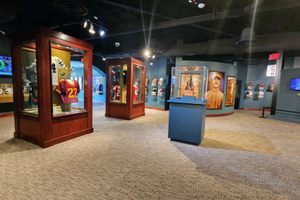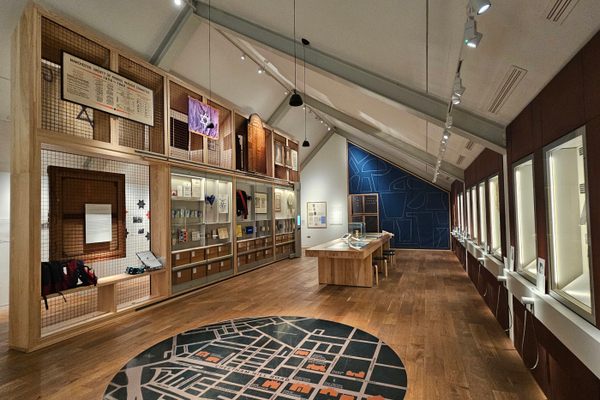About
Today, 39 tribal nations, each with its own distinct language and history, reside within Oklahoma. In some regards, that makes the state a more culturally and linguistically diverse place than the European continent. Of course, this consolidation was not by choice. And while the story of the First Americans is known far and wide, one museum in Oklahoma City takes a more comprehensive and hopeful approach to the 20,000-year history of the continent.
A 175,000-square-foot museum on the banks of the Oklahoma River, the First Americans Museum is the largest single-building tribal cultural center in the country. From its location to its architecture to an on-site restaurant and—of course—an array of exhaustive exhibits, FAM seeks not to merely tell the story of the First Americans through an indigenous lens, but to prove that this story is far from over.
The museum opened in 2021, the culmination of roughly 30 years of planning. Besides fundraising and paperwork, the process of developing a design that wasn’t too specific to one tribe proved to be a challenge. In time, architects realized enough commonalities to settle on an approach. Just as the front doors of many historic and present-day indigenous homes face east to greet the morning sun, the museum’s entrance faces east toward a steel arch in a centralized courtyard from which hangs an open hand—a symbol of welcome. A 90-foot tall spiraling earthen mound was constructed around the museum such that, at the summer solstice, the sun sets at the peak of the mound, and at the winter solstice, the sun sets through a tunnel cut into the mound, flooding the interior field with sunlight. As right angles are believed to trap spirits and cause imbalance, curvature is a dominant feature appearing throughout the premises.
The centerpiece of the museum, the Hall of the People, is a 110-foot tall glass dome inspired by grass lodges seen in Wichita and Caddo communities, upheld by 10 columns to represent the 10 miles walked daily by those on the Trail of Tears. The hall leads visitors into three main exhibit galleries, two theaters, and two restaurants, comprising a multi-sensory experience of indigenous culture. Educational exhibits highlight each of the 39 tribes’ respective origin stories alongside historical accounts from members.
Other exhibits recreate the landscape of North America before European contact, and compare depictions created by colonizers with those created by Indigenous artists. The largest piece in the museum is “Origins,” the outside of which is a 14-foot by 65-foot convex wall decorated in the style of Caddo pottery, the inside serving as a 320° screen onto which short films depicting various origin stories are projected.
The museum’s Thirty Nine Restaurant features a menu created in part by the acclaimed Potawatomi chef Loretta Barrett Oden. It includes traditional recipes, many of which are made with ingredients sourced directly from local nations.
Related Tags
Know Before You Go
This sprawling museum is open 10:30 a.m.–5 p.m. daily, though special events dot the calendar from Indigenous Peoples Day to a New Year’s Stickball Game and of course Summer and Winter Solstice Celebrations.
Community Contributors
Added By
Published
October 25, 2023
Sources
- https://famok.org/about-us/
- https://famok.org/wp-content/uploads/2023/06/6-6-23-Media-Kit_APedited.pdf
- https://www.smithsonianmag.com/travel/brand-new-museum-oklahoma-city-honors-indigenous-people-at-every-turn-180978742/
- https://www.neh.gov/article/new-museum-first-americans
- https://www.oklahoman.com/story/entertainment/2021/09/17/first-americans-museum-fam-okc-ten-highlights-new-downtown-attraction/5549066001/





































